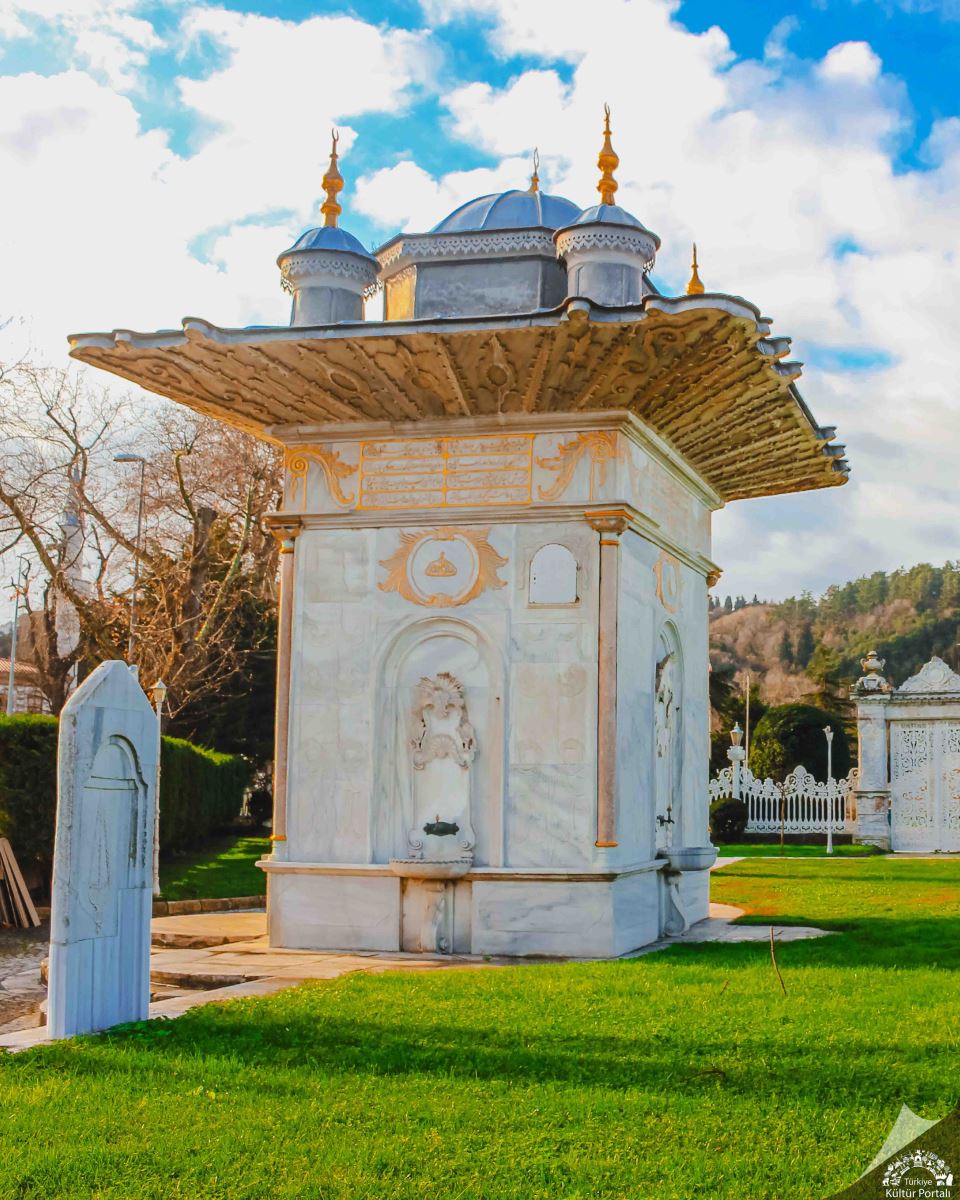Mihrişah Sultan Fountain is a monumental square fountain built in 1806 by Ottoman Sultan Selim III in memory of his mother, Mihrişah Sultan, in front of Küçüksu Pavilion on the Anatolian side of Istanbul, along the Bosphorus coast. This structure, remarkable for its architecture reflecting a transition between Baroque and Empire styles, is considered one of the rarest public architectural examples from the classical period of the Bosphorus. Located on Küçüksu Street within the borders of Beykoz district of Istanbul, the fountain is also known as the Küçüksu Pavilion Fountain due to its location.

Mihrişah Sultan Fountain (Turkey Culture Portal)
History
The Küçüksu region stood out as one of the popular recreational areas for both sultans and the public during the Ottoman period. Sultan Selim III had the wooden structure of Küçüksu Pavilion renovated in 1792 in memory of his mother, Mihrişah Sultan, had the grassy recreation area behind it organized, and commissioned this fountain in 1806. The inscription of the fountain was penned by Hafifzade Mehmed Pasha, one of the prominent statesmen of the period, and consists of a total of thirty-two lines. These inscriptions, placed on the four facades of the structure, hold historical document value and are notable for their literary style. The tughra (sultan's monogram) on the wide face of the fountain belongs to Sultan Selim III.
Architectural Features
The Mihrişah Sultan Fountain, whose architect is not definitively known, was designed with a nearly square rectangular plan (3.20 x 3.90 m), four faces, and as a public square fountain. In this respect, it continues the monumental water architecture tradition of its period. Built on the seashore, the fountain rests on a three-step platform; however, the platform seen today is not original.
The corners of the structure are emphasized by engaged columns with capitals and bases. Small turrets on each facade both enhance the structural support of the central dome and strengthen its visual integrity. The dome is surrounded by wide eaves resting on stone corbels; these eaves project outwards and are adorned with rich Empire-style decorations.
On two opposing faces of the fountain, projecting troughs are located and are supported by S-shaped Baroque corbels. These corbels, adorned with acanthus leaves, lend a detail to the fountain that reflects the decorative understanding of the period. Acanthus and seashell motifs are found on the keystones of the round-arched, shallow niches where the faucets are located. The surfaces outside the niches are decorated with abstract branch and floral motifs created using a low-relief technique.
Art Historical and Cultural Value
The Mihrişah Sultan Fountain is one of the rare examples that combine the local interpretation of the Baroque style in Ottoman architecture with the influences of the Empire style within the same structure. In this respect, it is significant both as a reflection of Western influences on Ottoman architecture and as one of the last representatives of classical fountain architecture.
The fountain, frequently depicted in 19th-century Bosphorus engravings and paintings, holds an important place in Istanbul's urban memory in both artistic and historical contexts. Although the structure has been affected by subsequent arrangements around it over time, it has largely preserved its architectural integrity to the present day.


